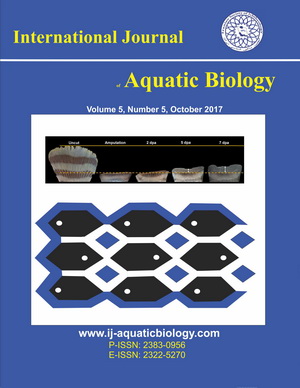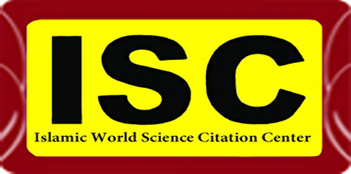Antibacterial activity of green-synthesized gold nanoparticles produced by Spirulina platensis algae
Downloads
Gold nanoparticles (AuNPs) synthesized using green methods are of paramount importance due to their potential in combating antimicrobial resistance and enhancing antioxidant therapies. Incorporating Spirulina platensis into nanoparticle synthesis offers a sustainable and eco-friendly alternative that addresses key challenges in modern nanomedicine. This research aimed to evaluate the efficacy of S. platensis as a bio-reductant for AuNP synthesis and to assess the resulting nanoparticles' biological activities. The purpose was to establish a reproducible, green synthesis protocol for high-quality AuNPs with improved biomedical potential. Spirulina platensis samples were procured in powdered form from a reputable supplier, ensuring consistency and purity for the subsequent extraction and synthesis processes. UV-Visible spectroscopy, XRD, and FE-SEM were used for characterization, while GC-MS analysis indicated bioactive reducing agents in the extract. AuNP production was confirmed by a significant surface plasmon resonance peak at 405?nm in the UV-Visible examination. XRD patterns showed a face-centered cubic structure with a prominent peak at 38° (2?). The FE-SEM scans showed that the AuNPs were mostly spherical, with an average diameter of 20-30 nm. Antibacterial assays showed inhibition zones of up to 20 mm against Acinetobacter baumannii and 18 mm against Enterococcus faecalis, with activity being dose-dependent, while antioxidant assays recorded a maximum scavenging inhibition of 73.8% at a concentration of 1?mg/ml. GC-MS analysis identified key bioactive compounds, including fatty acids, which make up approximately 30% of the extract, facilitating effective nanoparticle synthesis. Overall, the study confirms that S. platensis is an effective bio-reductant for the green synthesis of gold nanoparticles, which exhibit significant potential for various biomedical applications.
Downloads
Al-Abboodi A., Albukhaty S., Sulaiman G.M., Al-Saady M.A., Jabir M.S., Abomughaid M.M. (2024). Protein conjugated superparamagnetic iron oxide nanoparticles for efficient vaccine delivery systems. Plasmonics, 19(1): 379-388.
Al-Abboodi A., Tjeung R., Doran P., Yeo L., Friend J., Chan P. (2011). Microfluidic chip containing porous gradient for chemotaxis study. Smart Nano-Micro Materials and Devices, 8204: 219-224.
Al-Badwy A.H., Khalil A.M., Bashal A.H., Kebeish R. (2023). Polysaccharides from Spirulina platensis (PSP): promising biostimulants for the green synthesis of silver nanoparticles and their potential application in the treatment of cancer tumors. Microbial Cell Factories, 22 (1): 247.
Aldujaili N.H., Banoon S.R. (2020). Antibacterial characterization of titanium nanoparticles nanosynthesized by streptococcus thermophilus. Periódico Tchê Química, 17(34): 311-320.
AlHasan L., Qi A., Al-Abboodi A., Rezk A., Shilton R.R., Chan P.P., ... Yeo L. (2013). Surface acoustic streaming in microfluidic system for rapid multicellular tumor spheroids generation. Micro/Nano Materials, Devices, and Systems, 8923: 828-831
Ali Z.H., Al-Saady M.A.A.J., Aldujaili N.H., Rabeea Banoon S., Abboodi A. (2022). Evaluation of the antibacterial inhibitory activity of chitosan nanoparticles biosynthesized by Streptococcus thermophilus. Journal of Nanostructures, 12(3): 675-685.
Al-Muhanna S.G., Banoon S.R., Al-Kraety I.A.A. (2020). Molecular detection of integron class 1 gene in proteus mirabilis isolated from diabetic foot infections. Plant Arch, 2(1): 3101-7.
Almutairy B. (2024). Extensively and multidrug-resistant bacterial strains: case studies of antibiotics resistance. Frontiers in Microbiology, 15: 1381511.
Alprol A.E., Mansour A.T., Abdelwahab A.M., Ashour M. (2023). Advances in green synthesis of metal oxide nanoparticles by marine algae for wastewater treatment by adsorption and photocatalysis techniques. Catalysts, 13(5): 888.
Al-Saady A.J., Aldujaili N.H., Banoon S.R., Al-Abboodi A. (2006). Antimicrobial properties of nanoparticles in biofilms. Revis Bionatura, 7(4): 71.
Alsaiari N.S., Alzahrani F.M., Amari A., Osman H., Harharah H.N., Elboughdiri N., Tahoon M.A. (2023). Plant and microbial approaches as green methods for the synthesis of nanomaterials: Synthesis, applications, and future perspectives. Molecules (Basel, Switzerland), 28(1): 463.
Banoon S., Ali Z., Salih T. (2020). Antibiotic resistance profile of local thermophilic Bacillus licheniformis isolated from Maysan province soil. Comunicata Scientiae, 11: e3291-e3291.
Banoon S.R., Ghasemian A. (2022). The characters of graphene oxide nanoparticles and doxorubicin against HCT-116 colorectal cancer cells in vitro. Journal of Gastrointestinal Cancer, 53(2): 410-414.
Chugh D., Viswamalya V.S., Das B. (2021). Green synthesis of silver nanoparticles with algae and the importance of capping agents in the process. Journal, Genetic Engineering and Biotechnology, 19(1): 126.
Benouis K., Khane Y., Ahmed T., Albukhaty S., Banoon S.R. (2022). Valorization of diatomaceous earth as a sustainable eco-coagulant for wastewater treatment: optimization by response surface methodology. Egyptian Journal of Chemistry, 65(9): 777-788.
Deyab M., El-Sheekh M., Hasan R., Elsadany A., Abu Ahmed S. (2021). Phytochemical components of two cyanobacterial local strains. Scientific Journal for Damietta Faculty of Science, 11(1): 67-75.
Dhaka A., Chand Mali S., Sharma S., Trivedi R. (2023). A review on biological synthesis of silver nanoparticles and their potential applications. Results in Chemistry, 6: 101108.
Díaz-García V., Haensgen A., Inostroza L., Contreras-Trigo B., Oyarzun P. (2023). Novel microsynthesis of high-yield gold nanoparticles to accelerate research in biosensing and other bioapplications. Biosensors, 13(12): 992.
Gupta D., Boora A., Thakur A., Gupta T.K. (2023). Green and sustainable synthesis of nanomaterials: Recent advancements and limitations. Environmental Research, 231(3):116316.
Hammami I., Alabdallah N.M., Jomaa A.A., Kamoun M. (2021). Gold nanoparticles: Synthesis properties and applications. Journal of King Saud University, Science, 33(7): 101560.
Hassan B.A., Lawi, Z.K.K., Banoon S.R. (2020). Detecting the activity of silver nanoparticles, pseudomonas fluorescens and Bacillus circulans on inhibition of Aspergillus niger growth isolated from moldy orange fruits. Periódico Tchê Química, 17(35): 678-690.
Hassan S.A.D.H., Almaliki M.N.S., Hussein Z.A., Albehadili H.M., Rabeea Banoon S., Abboodi A., Al-Saady M. (2023). Development of nanotechnology by artificial intelligence: A comprehensive review. Journal of Nanostructures, 13(4): 915-932.
Huang H., Liu R., Yang J., Dai J., Fan S., Pi J., Wei Y., Guo X. (2023). Gold nanoparticles: Construction for drug delivery and application in cancer immunotherapy. Pharmaceutics, 15(7): 10383270.
Kalabegishvili T., Kirkesali E., Rcheulishvili A. (2012). Synthesis of gold nanoparticles by blue-green algae Spirulina platensis. 14 p. Retrieved from: https://inis. iaea.org/search/search.aspx?orig_q=RN:43108872
Kim Y., Abuelfilat A.Y., Hoo S.P., Al-Abboodi A., Liu B., Ng T., ... Fu J. (2014). Tuning the surface properties of hydrogel at the nanoscale with focused ion irradiation. Soft Matter, 10(42): 8448-8456.
Mahmoud W.M., Abdelmoneim T.S., Elazzazy A.M. (2016). The impact of silver nanoparticles produced by Bacillus pumilus as antimicrobial and nematicide. Frontiers in Microbiology, 7: 1746.
Menaa F., Wijesinghe U., Thiripuranathar G., Althobaiti N.A., Albalawi A.E., Khan B.A., Menaa B. (2021). Marine algae-derived bioactive compounds: A new wave of nanodrugs? Marine Drugs, 19(9): 484.
More P.R., Pandit S., Filippis A.D., Franci G., Mijakovic I., Galdiero M. (2023). Silver nanoparticles: Bactericidal and mechanistic approach against drug resistant pathogens. Microorganisms, 11(2): 9961011.
Mousa A.A., Hassan S.A.D.H., Rashid M.K., Al-Saady M. (2025). Safeguarding Patient Data: Machine Learning for Phishing URL Detection in Healthcare Systems. Journal of Advanced Research Design, 131(1): 47-60.
Patel D., Patel B., Yadav V.K., Sudhakar M.P., Alharbi S.A., Salmen S.H., Patel I., Choudhary N., Patel A. (2024). Silver nanoparticles synthesized from marine algae Spatoglossum asperum: Antioxidant properties and seed germination enhancement. Journal of Hazardous Materials Advances, 16: 100478.
Rashid M.K., Salman I.R., Obaid A.L., Hassan S.A.D.H., Al-Musawi M.R., Al-Saady M. (2024). Application of machine learning in predicting sources of water pollution in the Euphrates and Tigris rivers in Iraq. International Journal of Aquatic Biology, 12(6): 581-589.
Rónavári A., Igaz N., Adamecz D.I., Szerencsés B., Molnar C., Kónya Z., Pfeiffer I., Kiricsi M. (2021). Green silver and gold nanoparticles: Biological synthesis approaches and potentials for biomedical applications. Molecules (Basel, Switzerland), 26 (4): 844.
Salman I.R., Rasheed A.A., Hassan S.A.D.H., Hussein R.A., Al-Saady M. (2025). Automated aquatic biodiversity monitoring using deep learning on the Tigris River: Species identification and ecosystem assessment. International Journal of Aquatic Biology, 13(1): 30-40.
Sampath S., Madhavan Y., Muralidharan M., Sunderam V., Lawrance A.V., Muthupandian S. (2022). A review on algal mediated synthesis of metal and metal oxide nanoparticles and their emerging biomedical potential. Journal of Biotechnology, 360: 92-109.
Shi W., Casas J., Venkataramasubramani M., Tang L. (2012). Synthesis and characterization of gold nanoparticles with plasmon absorbance wavelength tunable from visible to near infrared region. ISRN Nanomaterials, 2012: 1-9.
Sudha S.S., Rajamanickam K., Rengaramanujam J. (2013). Microalgae mediated synthesis of silver nanoparticles and their antibacterial activity against pathogenic bacteria. Indian Journal of Experimental Biology, 51(5): 393-399.
Veena S., Devasena T., Sathak S.S.M., Yasasve M., Vishal L.A. (2019). Green synthesis of gold nanoparticles from Vitex negundo leaf extract: Characterization and in vitro evaluation of antioxidant–antibacterial activity. Journal of Cluster Science, 30(6): 1591-1597.
Xu L., Wang Y.-Y., Huang J., Chen C.-Y., Wang Z.-X., Xie H. (2020). Silver nanoparticles: Synthesis, medical applications and biosafety. Theranostics, 10(20): 8996-9031.
Ying S., Guan Z., Ofoegbu P.C., Clubb P., Rico C., He F., Hong J. (2022). Green synthesis of nanoparticles: Current developments and limitations. Environmental Technology and Innovation, 26: 102336.
Zainab J.M., Sahira K., Al-Abboodi A.K., Alsaady H.A. (2024). Enhancing pediculicidal activity against Pediculus humanus capitis using iron oxide nanoparticle-based formulations of some plant extracts and acetic acid solution. Nigerian Journal of Parasitology, 45(2).
Copyright (c) 2025 International Journal of Aquatic Biology

This work is licensed under a Creative Commons Attribution 4.0 International License.








